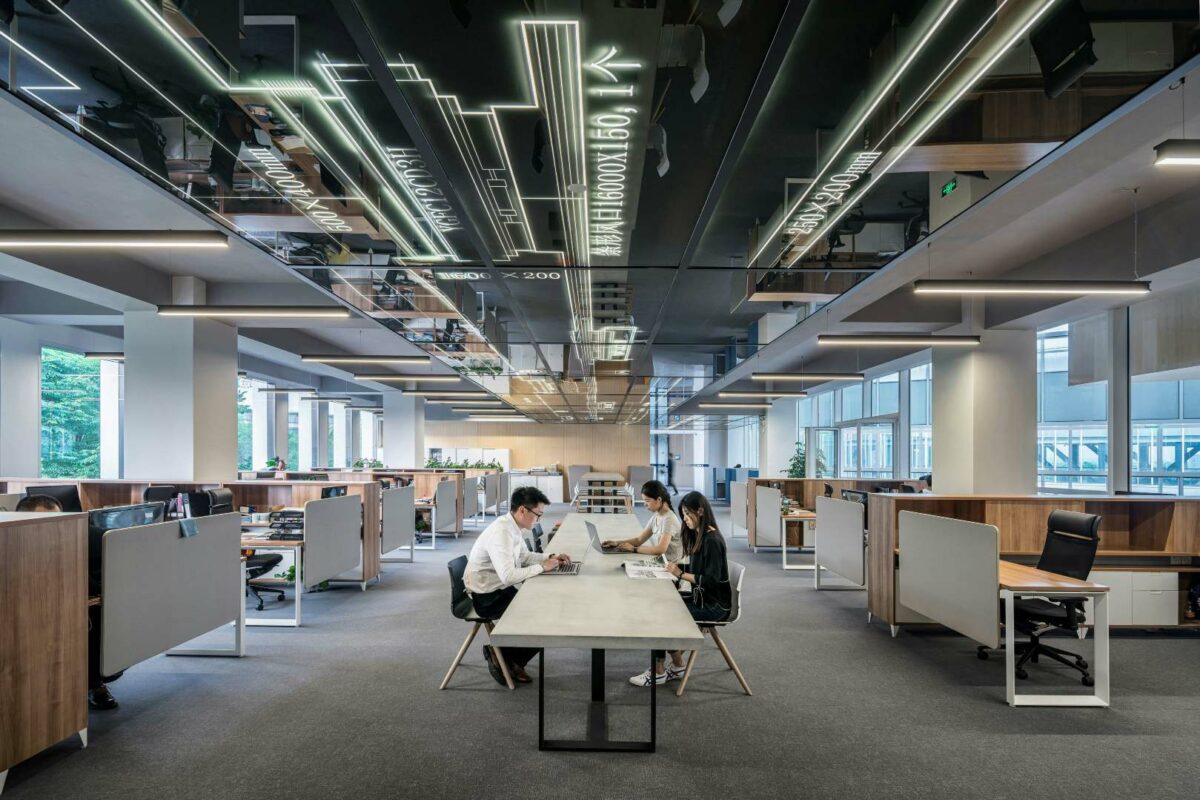Here in the UK, British workers are working harder than ever before. According to a five-yearly study which commenced in 1986, 46% of British workers strongly agreed that their jobs required them to work ‘very hard’, an increase of 12% from 1992. Nurses and teachers are feeling the most pressure with increases of 55% and 40% respectively.
But how does that translate in terms of productivity?
We’re not known to be a productive bunch here in the UK – since the 2008 recession, the productivity gap has been on the rise. According to the Office for National Statistics (ONS) in 2016, the output per worker in the UK was 15.4% below the average for the rest of the G7 countries.
Quite shockingly, by Thursday lunchtime, other countries have produced as much as the UK produces in a full 37.5 hour week!
The office environment itself can have a huge impact on performance and productivity among employees. With that being said, we’ve put together a list of 5 everyday sources of decreased productivity in the workplace.
Lighting
According to The Health & Safety Executive (HSE), employers have a duty to ensure that lighting within the workplace is safe, and does not pose a risk to the health and safety of employees or others who use the premises.
80% of office workers said that having good lighting in their workspace is important to them
Science has proven that lighting in the workplace has as much of a significant effect on the efficiency and productivity of employees as any other considerable factor.
In a recent study by UK stationery giant Staples, 80% of office workers said that having good lighting in their workspace is important to them, with a further 40% stating that they deal with uncomfortable lighting while at work every day.
In an office setting, where employees are spending a large portion of time in front of a computer, insufficient lighting can lead to eyestrain, headaches, and fatigue. Working in insufficient light is known to cause drowsiness and a lack of focus, while studies have shown that overly harsh lighting is the leading cause of migraine headaches among office workers.
Office lighting should be bright and cool, in order to keep employees alert and promote productivity in the workplace.
Temperature
50% of UK offices are considered too hot and, in the winter, 52% are considered too cold
While legally there is no minimum temperature in which employees are allowed to work, employers are required by law to provide a reasonable temperature in the workplace. Temperature is often one of the most tensely debated topics in the workplace, particularly in today’s modern, open plan offices. A recent study found that in the summer, 50% of UK offices are considered too hot and, in the winter, 52% are considered too cold.
Scientists at the Lawrence Berkley National Laboratory found that the ideal temperature to increase productivity in the workplace is 21 degrees celsius. The study found that at any temperature higher or lower than 21°, even by 1° had an adverse effect on productivity; and after temperatures reached 25° the effects became more pronounced and productivity was significantly reduced.
Another controlled study revealed that workers exposed to cold temperatures at work made 44% more mistakes, and were less than half as productive than those working in a warmer environment.
Scientists from the University of Chicago found that once the temperature rises above 27° – productivity drops by 4% per degree celcius; by the time temperatures reach 33°, productivity drops as low as 85%! Office workers who are too hot commonly complain of lethargy, an inability to focus and lack of motivation to complete tasks.
Noise
We might not know it but noise is a huge source of stress on our bodies! The European Union calculates a financial cost of over £30 billion a year, in terms of lost working days, healthcare costs, impaired learning and reduced productivity; as a direct result of exposure to excessive noise. (Source: BIAMP)
Research has revealed that prolonged exposure to loud and surprising intermittent sounds, such as ringing phones and shouting can have a profound physical effect on the human body. Such noises can lead to spikes in blood pressure and increased heart rate.
In a study named ‘Disruption of office-related tasks by speech an office noise’ by The British Journal of Psychology, researchers found that exposure to just one nearby conversation reduced productivity by an alarming 66%.
Working to block out background noise requires effort, and can leave workers feeling drowsy and fatigued; unable to focus and more likely to make mistakes while completing tasks.
Humidity
Generally considered a problem for people in warmer climates, high humidity can also be an issue here in the UK; in poorly ventilated offices, with a high number of workers and without adequate air conditioning or climate control.
For comfort, the indoor humidity level should sit somewhere between 30 and 50%. Once humidity levels exceed 50%, workers will begin to feel drowsy and sluggish.
Inconsistent levels of humidity also have an adverse effect on physical health; prolonged periods of excessive humidity can lead to spore-releasing mould, which if ingested by humans can lead to eye and skin irritations, and in the worst cases, serious lung infections. These conditions are the ideal breeding ground for dust mites, who love warm, moist conditions. Dust mites are particularly problematic for asthma sufferers and can cause severe allergic reactions.
Low humidity can also have a negative impact on productivity. Workers in offices with exceptionally dry air experience dry and itchy eyes, nose and throat; as well as nasty coughs and rashes!
Many of the afore mentioned symptoms have been attributed to ‘Sick Building Syndrome’. Sick Building Syndrome is the name given to a group of symptoms which are only experienced when in a specific building, usually an office; and more specifically open-plan offices.
Although, it is not exactly clear what causes Sick Building Syndrome, the NHS lists poor ventilation and poorly maintained air conditioning systems; dust, smoke and fumes and fibres in the air; as well as excessively bright or flickering lights. Symptoms of Sick Building Syndrome include headaches, dry, itchy skin and eyes and rashes, as well as tiredness and difficulty concentrating.
CO2
A 2012 study by Lawrence Berkeley National Laboratory, California found that levels of carbon dioxide commonly found in crowded rooms, such as conference or meeting rooms, has an adverse effect on the cognitive performance and decision-making ability of those in the room.
The study found that participants who were exposed to 2,500 parts per million of carbon dioxide, reacted similarly to someone who had a blood alcohol level of 80 milligrams per 100 millilitres of blood – the same as the UK legal alcohol driving limit.
And while a typical office setting is generally around 1,000 parts per million, the study found that during meetings, these levels can exceed 3,000 parts per million of CO2 within half an hour. Exposure to such levels of CO2 can cause headaches, sleepiness, poor concentration and loss of attention, as well as increased heart rate and nausea. In this environment participants reported experiencing difficulty taking initiative, staying orientated to a task, thinking strategically and managing information usefully.
To find more information on productivity in the workplace, click here.
Article authored by Lisa Appleby of McGowan Transcriptions.
Content Team
Work in Mind is a content platform designed to give a voice to thinkers, businesses, journalists and regulatory bodies in the field of healthy buildings.




